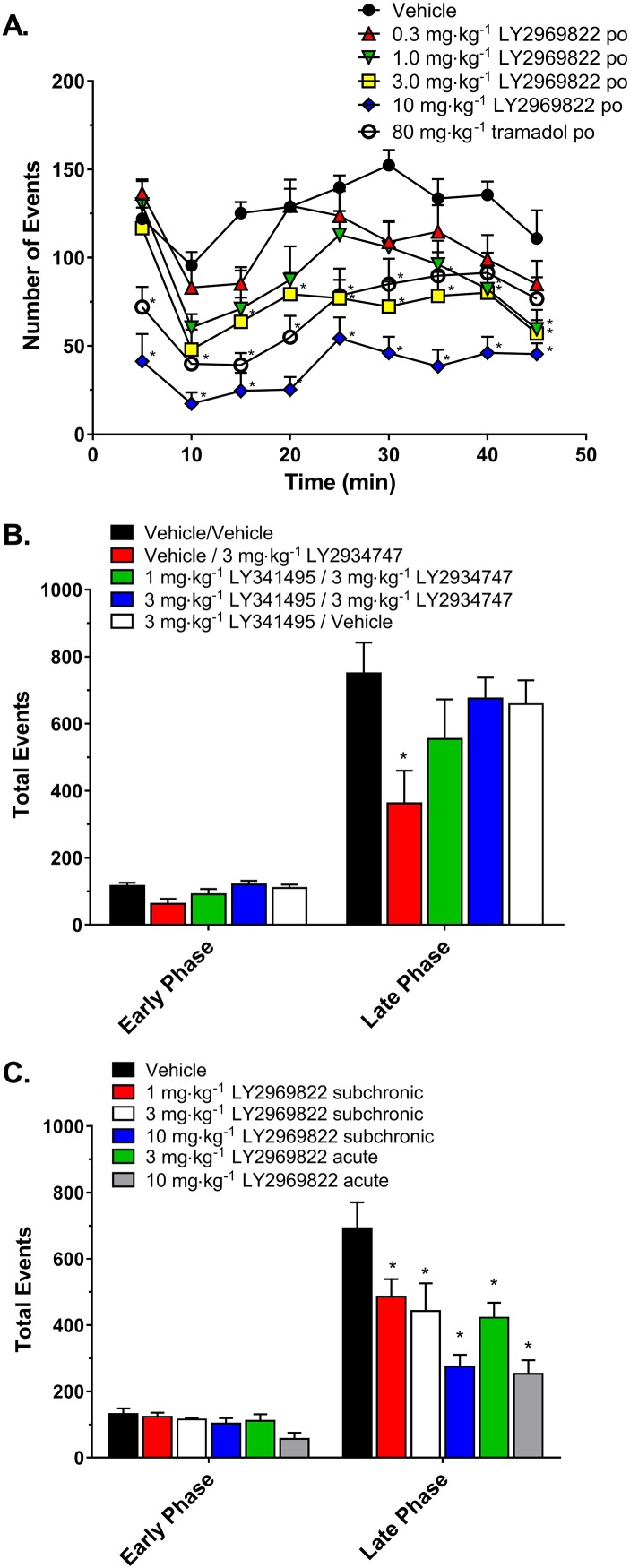Figure 2.

Effects of LY2969822 and LY2934747 in blocking formalin‐induced nocifensive behaviours. (A) Vehicle, tramadol (80 mg·kg−1) or LY2969822 (0.3 to 10 mg·kg−1, active equivalents) was dosed p.o. 2 h prior to formalin injection into the hind paw of the rat. Nocifensive responses were monitored and quantified in 5 min bins for 50 min. Values are mean ± SEM, n = 7–8 per group. *Indicates significantly different versus vehicle response at the corresponding time point (P < 0.05, two‐way ANOVA followed by Dunnett's test). (B) LY341495 or vehicle was administered at 1 or 3 mg·kg−1 via the s.c. route 70 min prior to formalin injection into the hind paw, while LY2934747 or vehicle was administered at 3 mg·kg−1 via the i.p. route 60 min prior to formalin injection. (C) LY2969822 was dosed p.o. at 1 to 10 mg·kg−1 (active equivalent) with a single treatment (acute) or daily treatments for 3 days (subchronic), and 2 h after the last dose formalin was injected into the hind paw of the rat. Binned data were summed for early phase (first 5 min) and late phase (minutes 11 through 40) time points. Values are mean ± SEM, n = 7–8 per group. *Indicates significantly different versus vehicle response (P < 0.05, one‐way ANOVA followed by Dunnett's test).
